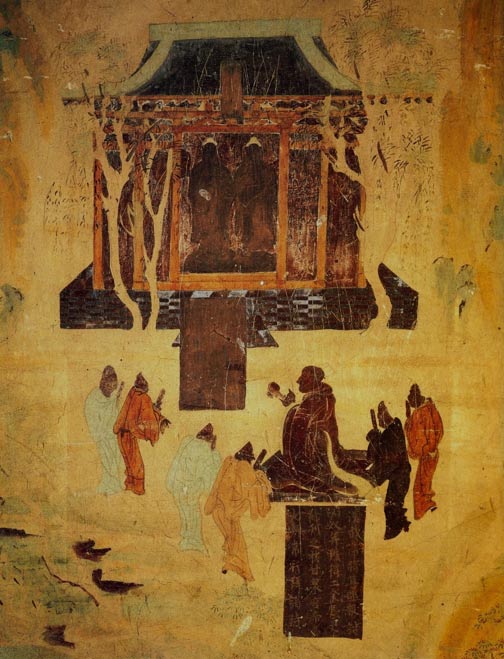
of a dethroned Chinese emperor of the first century BC. (Xinhua news photo)
www.ancient-origins.net | By Mark Miller | November 6, 2015
In 74 BC the royal Han Dynasty clan of ancient China dethroned the emperor after just 27 days because of his lack of talent and for intolerably indulging in pleasures. But when he died, insane, five years later that didn’t stop them from giving him a fantastic burial with grave goods that included gold and silver items, 10 tons of bronze coins, musical instruments, chariots, sacrificed horses among other thing. Archaeologists have now discovered the tomb and this week described the hoard of riches that have been excavated.
Researchers believe the main tomb of the Haihunhou cemetery near Nanchang in Jiangxi Province is of Liu He, the grandson of Emperor Wu, considered the foremost ruler of the Han Dynasty (206 BC to 25 AD). Liu He served as emperor in 74 BC for just 27 days until the royal clan dethroned him because he had loose morals and no talent. “Haihunhou” mean Marquis of Haihun, the title he was given after he was forced off the throne, says an article in ECNS.cn.
One site says Liu He committed 1,127 acts of misconduct, though it did not specify what they were. Another site says “he was known for his inclination to pleasures already as a prince,” a situation that become intolerable when he become emperor. Though he was considered mad and was examined from time to time by officials, they made him the marquis of Haihun anyway.
The cemetery is so important that Chinese officials are directing subordinates to apply to the United Nations for World Heritage site status with UNESCO. Archaeologists think the site may have been the capital of the Haihun Kingdom, which was a small kingdom in the north of Jiangxi The cemetery measures about 40,000 square meters (about 10 acres) and includes eight tombs. Its walls run for about 900 meters (3,250 feet).
The cemetery includes the tomb of Haihunhou’s wife, affiliated memorial temples and drainage systems and roads. In addition to the Wuzhu bronze coins and the chariots, the team has found more than 10,000 other gold, bronze and iron items, wooden tablets, bamboo slips and jade articles, Xin Lixiang of the China National Museum said. He is leading the excavation.
“There may be a royal seal and jade clothes that will suggest the status and identity of the tombs occupant,” he told ECNS.cn.

the greatest Han monarch during a prosperous era, worshiping Buddhas.
His grandson Liu He was not so illustrious but was given a grand burial anyway. (Wikimedia Commons)
The team has discovered several musical instruments including chimes, an instrument with 25 strings called a se, pan flutes and a sheng or a reed-pipe wind instrument. They have also found terracotta figurines that depict how to play the instruments.
Xin has studied about 4,000 Han Dynasty tombs, but claims this cemetery is the most complete Han burial ground ever discovered. Next on the archaeologists’ agenda is to open the locked coffins in the central mausoleum.
This is the only tomb south of the Yangtze River that has actual, life-sized vehicles in the burial. In addition to the horse-drawn vehicles, there were four sacrificed horses and more than 3,000 accessories decorated with silver and gold.
The tombs of other aristocrats buried there have made the team speculate that the site surrounding the cemetery was the capital of Haihun. The entire site is 5 square kilometers (1,235 acres).
Experts in archaeobotany, zooarchaeology and others who study metals, textiles and historical texts are documenting the site and recording data.



